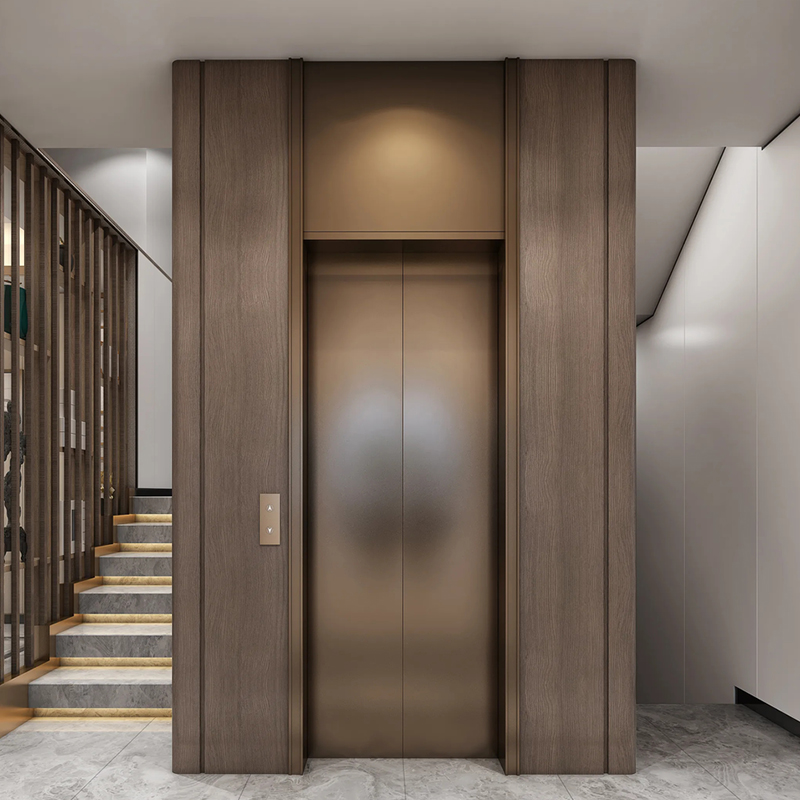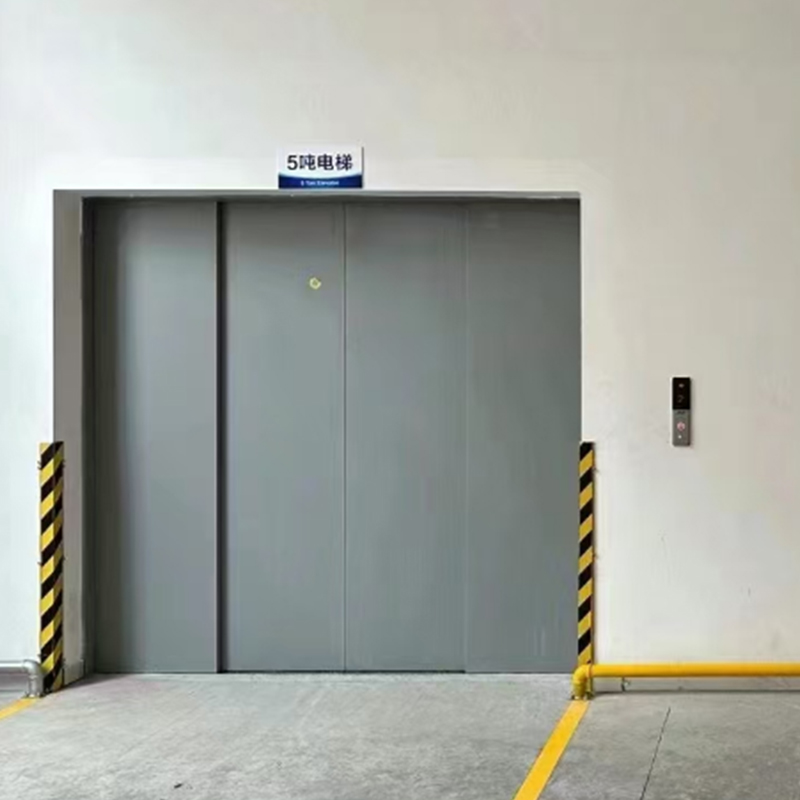
How does the smart touch system revolutionize the experience of using home elevators?
Posted by Admin | 22 May
The core of the smart touch system lies in the application of capacitive touch technology. This technology is built on the principle of electromagnetic induction. There is a criss-crossing capacitor matrix inside the touch screen, and each intersection is equivalent to a tiny capacitor. When the user's finger approaches the screen, the human body, as a conductor, will form a coupling capacitor with the capacitor matrix, changing the original capacitance value. The built-in sensing circuit of the system can quickly detect the changes in these capacitance values, and calculate the precise coordinates of the touch point on the X and Y axes through complex algorithms, thereby achieving precise positioning. This non-contact operation method not only makes the operation smoother, but also avoids the wear problem of physical buttons caused by frequent pressing, greatly improving the service life and reliability of the system. Taking the floor selection operation as an example, the user only needs to lightly touch the floor icon on the screen, and the smart home elevator with touch control can receive the command and start running in an instant. The whole process is as smooth and natural as operating a smart tablet.
In order to ensure the stability and durability of the smart touch system, the surface of the touch screen is covered with a layer of high-strength tempered glass. The manufacturing process of tempered glass includes complex process steps. First, ordinary glass is cut into suitable sizes, and then sent to a high-temperature furnace to be heated to a point close to the softening point. At this time, the glass is in a plastic state. Then, the glass is quickly and evenly cooled by strong wind, so that the surface of the glass quickly solidifies and shrinks, while the inside remains in a certain hot state. This temperature difference causes strong compressive stress to form on the surface of the glass and tensile stress to be generated inside. The two are balanced, making the strength of tempered glass several times higher than that of ordinary glass. In daily use, high-strength tempered glass can effectively resist external impacts such as key scratches and accidental collisions. Even if it is broken by a violent impact, it will break into small honeycomb-shaped blunt-angle particles without sharp fragments, minimizing the risk of harm to users. This protective design not only provides reliable protection for the delicate electronic components inside the touch screen, but also allows users to enjoy the convenience brought by smart touch without worrying about screen damage during use.
The software design of the smart touch system is also an important factor in its ability to provide users with a high-quality experience. During the interface design phase, the developers fully considered the principles of ergonomics, and after a lot of user research and testing, they finally determined a simple and intuitive design scheme. The main interface adopts a flat design style, and the floor buttons are presented with large-size, high-contrast icons, with clear digital logos, which can be easily identified even in a dimly lit environment. The button layout follows the human operating habits, and commonly used floors such as the first floor and residential floors are placed in the lower middle of the screen, which is convenient for users to operate with one hand. At the same time, the software supports personalized settings. Users can set commonly used floors as shortcut buttons according to their own frequency of use, and even customize button icons and names. In terms of operation procedures, the system has been deeply optimized. Taking floor selection as an example, after the user clicks the target floor icon, the system will immediately highlight the selected floor, and inform the user through slight vibration feedback and prompt sound that the command has been successfully received, without the need for additional confirmation steps, truly realizing an efficient operation experience. This simple and easy-to-understand operation logic allows even the elderly and children who are not familiar with electronic devices to quickly master the usage method when they first come into contact with them, and freely and conveniently operate the home elevator.
The intelligent touch system plays an irreplaceable role in improving the safety of home elevators. The system has built-in multiple anti-mistouch mechanisms, which accurately identify effective operations and mistouch behaviors by analyzing parameters such as the duration, strength, and trajectory of touch actions. When the elevator is in operation, the system will automatically block non-essential operations, such as accidentally touching the floor button and repeating the door opening and closing instructions, to avoid safety hazards caused by misoperation. The touch control system is deeply integrated with the elevator's safety monitoring module to obtain elevator operation data in real time, including key information such as door status, speed, and position. Once an abnormal situation is detected, such as the elevator door is not completely closed, the operating speed exceeds the normal range, and the leveling error is too large, the touch screen will immediately remind the user to pay attention to safety with a striking red warning icon and a continuous alarm sound. In addition, the system is also equipped with an emergency call function. The emergency call button uses a conspicuous red logo and is set at a fixed position at the bottom of the screen. When the user encounters an emergency, just long press the button, and the elevator will automatically dial the preset emergency contact number and transmit the elevator location and operation status information in real time to ensure that rescue personnel can quickly and accurately implement rescue.
In addition to the basic floor selection and elevator control functions, the smart touch control system has greatly expanded the application scenarios of home elevators. Users can enter the system management interface through the touch screen to view detailed elevator operation records, including the start time of each operation, the stop floor, the running time and other data. These data not only help users understand the frequency of elevator use, but also provide professional maintenance personnel with a basis for fault prediction. By analyzing abnormal fluctuations in the operating data, potential fault hazards can be discovered in advance, preventive maintenance can be achieved, and the elevator failure rate can be reduced. When taking the elevator, users can remotely control smart devices in their homes through the touch screen, such as turning on the living room lights, adjusting the air conditioning temperature, and starting the air purifier. For example, on the way home from get off work on a cold winter day, users can start the floor heating system in their home in advance in the elevator, so that the warm home environment can welcome their return; when going out, they can also turn off all electrical appliances in the home with one click through the elevator touch screen to avoid energy waste and achieve a convenient and energy-saving smart life experience.
-
 Founding Road, Qidu Linhu Economic Zone, Wujiang City, Jiangsu Province, China
Founding Road, Qidu Linhu Economic Zone, Wujiang City, Jiangsu Province, China
-
 [email protected]
[email protected]
-
 +86 17701557926/+86 0512-63818375
+86 17701557926/+86 0512-63818375


 En
En English
English русский
русский Español
Español عربى
عربى





